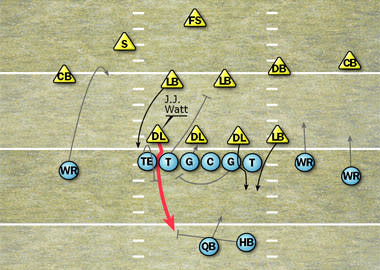Watt could be key to Texans' scheme change

Wade Phillips
Editor's note: Yahoo! Sports will break down how 12 top 2011 NFL draft picks can immediately impact their new clubs.
Clearly, the Houston Texans had to do something different. After sporting one of the most explosive offenses in the NFL over the past few seasons and having no playoff appearances to show for it, not to mention putting a catastrophically bad secondary on the field in 2010, the Texans brought in Wade Phillips, the ex-Dallas Cowboys head coach who has always had a great knack for turning defenses around.

One of the first things Phillips decided was to switch the Texans' vanilla 4-3 defense to concepts more to his liking. Phillips' defenses are often referred to as 3-4, but there's as much alternating between offset four-man fronts (where linemen will occupy 4-3 gaps in 3-4 looks) and 5-2 fronts in which all five linemen are eligible and possible pass-rushers and run-stoppers. One of the most controversial decisions Phillips made was to take the 6-foot-6, 290-pound end Mario Williams(notes) and designate him as an "outside linebacker" in the new scheme. Again, that's a bit of a misnomer – what Williams would do in a traditional 3-4 and what he'll do for Phillips will likely be very different, and you could see him with his hand down more than you think.
The Texans' total commitment to a diverse defensive concept was certainly evident in the first round of the 2011 NFL draft, when the team took Wisconsin defensive lineman J.J. Watt with the 11th overall pick. With Auburn's Nick Fairley(notes) and North Carolina's Robert Quinn(notes) still on the board, Houston went with the 6-5, 290-pound Watt, who projects best as an inside defender in a 3-4 or 5-2 front, with some four-man front versatility thrown in for good measure.

Williams played outside of tackle Amobi Okoye(notes) a lot of the time in 2010 – on the left and right sides – and he looked better with his hand down off the edge than he did in those rare instances when the Texans rushed three and he was the "endbacker" off the edge. What Williams will need to help him in this transition is an inside end who can draw double teams with his inside moves, thus freeing the edge for Williams to make his move to the quarterback. From that perspective, it's easier to understand the selection of Watt, because his best move may be the inside step to gain leverage when he's playing over the offensive guard or tackle.
Watt provided one of the better examples of his movement early in the second half of the Badgers' Week 7 win over Ohio State last season. Lining up between the left tackle and tight end, Watt benefitted from the tackle's reach block to the second level, juked the tight end, and forced the running back to abandon his route to block Watt instead. Watt brings this advantage whether he's lined up inside or on the edge, which makes him a good hybrid player.
There are still reasons to be concerned about Watt's NFL potential – at Wisconsin, he tended to get blown out looking for the splash play, and he was disconcertingly easy to block out of a play for a guy his size. But with some additional muscle and discipline, and in the right scheme, Watt could be one of the better inside ends in the league. It's just a matter of how, where, and with whom he's used.
Doug Farrar is a writer for Yahoo's Shutdown Corner blog and a senior writer for Football Outsiders.
